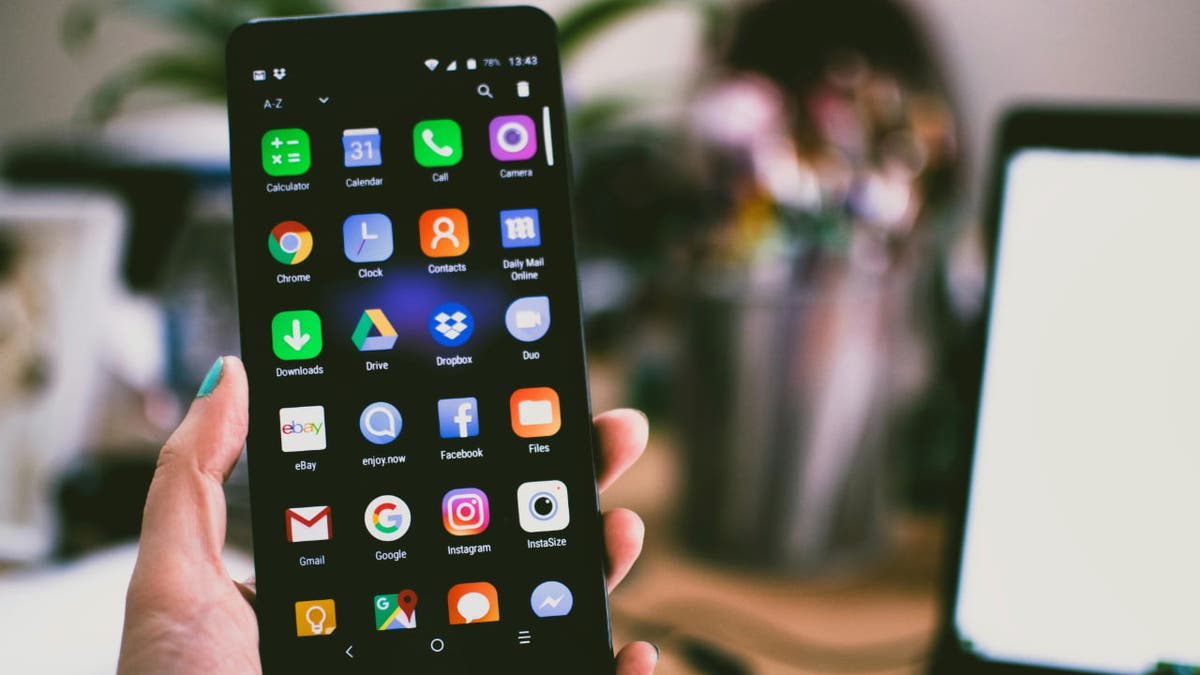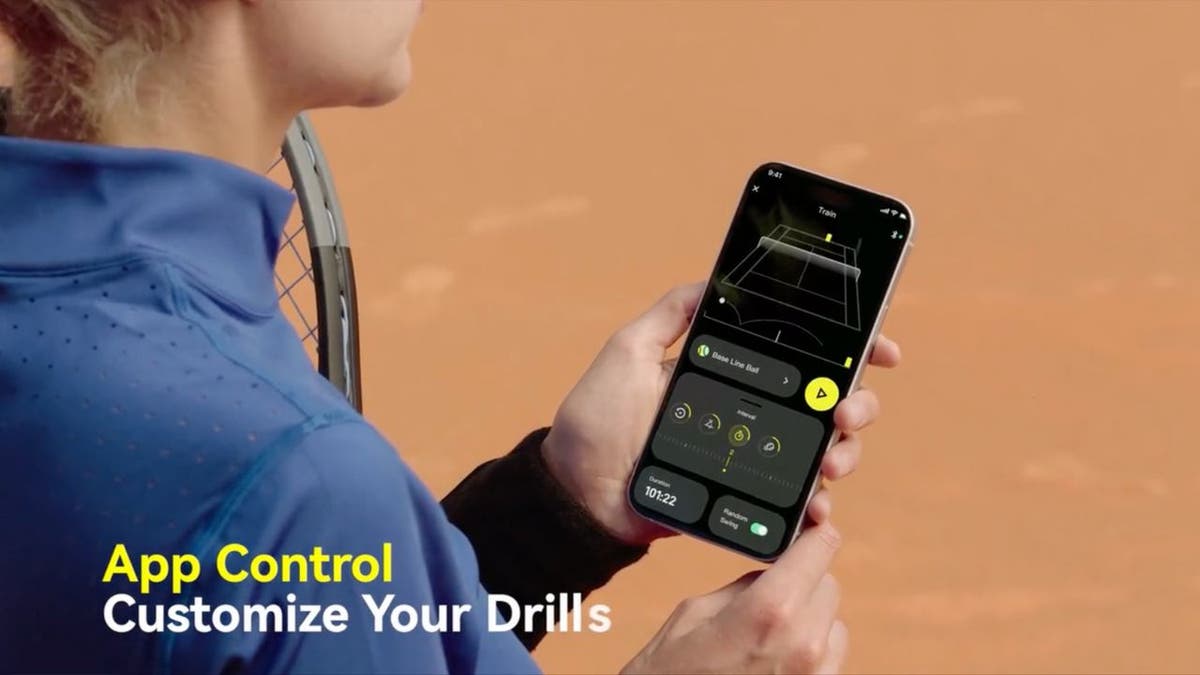AI researchers have recently been asking themselves a version of the question, “Is that really Zuck?”
Technology
Malicious Play Store apps put 8 million Android users at risk

Malicious apps are pretty common, and it’s easy to accidentally download them if you’re not cautious. You’ll often find these apps on third-party app stores, shady websites, or through suspicious emails and texts. What you wouldn’t expect is to encounter them on the Google Play Store if you’re an Android user or the App Store if you’re on iPhone.
While Apple does a great job of keeping its app marketplace safe, Google doesn’t quite measure up.
A new report has revealed that over a dozen malicious apps containing SpyLoan malware have been available on the Play Store. These apps have been downloaded by 8 million Android users, putting them at risk of extortion, harassment and financial loss. Below are images of four of the SpyLoan apps found on Google Play.
GET SECURITY ALERTS, EXPERT TIPS – SIGN UP FOR KURT’S NEWSLETTER – THE CYBERGUY REPORT HERE
Images of four of the SpyLoan apps found on Google Play (McAfee)
What is SpyLoan malware?
SpyLoan is malware often hidden in apps that promise instant loans. These apps reel people in with offers of quick, hassle-free loans, boasting low rates and hardly any requirements. While they might look legit at first glance, their real goal is to gather as much personal info as they can.
Once they have it, they use it to harass or pressure users into paying ridiculous interest rates. They also use shady tactics like countdown timers or “limited-time” offers to create a fake sense of urgency, pushing people to act fast without thinking it through. Instead of helping with finances, these apps trap users in a cycle of debt and invade their privacy.
McAfee’s mobile research team has uncovered 15 apps on the Google Play Store packed with SpyLoan malware. These apps use the same code and systems, targeting users worldwide to steal data and send it to command-and-control (C2) servers. Many of them hide behind fake names and logos that mimic legitimate financial institutions, making them look trustworthy at first glance. You can find the names of these apps in the screenshot added below.
WHAT IS ARTIFICIAL INTELLIGENCE (AI)?

Fifteen apps on the Google Play Store packed with SpyLoan malware (McAfee)
McAfee, an App Defense Alliance partner tasked with helping keep the Play Store safe, reported the apps to Google. Google took action, and the malicious versions of the apps are no longer available on Google Play.
We reached out to Google, and a rep confirmed that Android users are automatically protected against known versions of this malware by Google Play Protect. However, it is important to note that Google Play Protect may not be enough. Historically, it isn’t 100% foolproof at removing all known malware from Android devices.
ANDROID BANKING TROJAN EVOLVES TO EVADE DETECTION AND STRIKE GLOBALLY
How do these predatory apps work?
The goal of these malicious apps is to gather as much data as possible from infected devices, which they then use to extort users. Victims are often coerced into repaying loans at sky-high interest rates, with some even being threatened for delays. In extreme cases, the app operators have harassed victims’ families and sent death threats, using stolen personal photos as leverage.
These apps request intrusive permissions, giving them access to system data, cameras, call logs, contacts, location, and SMS messages. They justify this data collection by claiming it’s necessary for user verification and anti-fraud measures.
Users signing up for these services are verified through a one-time password (OTP) to confirm their phone number is from the target region. They are also pressured to share additional details like ID documents, bank accounts, and employment information.

A woman holding an Android phone (Kurt “CyberGuy” Knutsson)
ANDROID BANKING TROJAN MASQUERADES AS GOOGLE PLAY TO STEAL YOUR DATA
4 ways to protect yourself from SpyLoan malware
1. Have strong antivirus software: Android has its own built-in malware protection called Play Protect, but the SpyLoan malware proves it’s not enough. Historically, Play Protect hasn’t been 100% foolproof at removing all known malware from Android phones. The best way to protect yourself from clicking malicious links that install malware that may get access to your private information is to have antivirus protection installed on all your devices. This can also alert you of any phishing emails or ransomware scams. Get my picks for the best 2024 antivirus protection winners for your Windows, Mac, Android and iOS devices.
2. Download apps from reliable sources: It’s important to download apps only from trusted sources like the Google Play Store. You might say I am contradicting myself, but the Play Store is still safer than other options out there. They have strict checks to prevent malware and other harmful software. However, even with the security measures provided by Google Play, downloading apps from the store does not guarantee 100% protection against malware or harmful software. Avoid downloading apps from unknown websites or unofficial stores, as they can pose a higher risk to your personal data and device. Never trust download links that you get through SMS.
3. Be cautious with app permissions: Always review the permissions requested by apps before installation. If an app requests access to features that seem unnecessary for its function, it could be a sign of malicious intent. Do not give any app Accessibility permissions unless you really need to. Avoid granting permissions that could compromise your personal data.
4. Take loans from legit institutions: Always take loans from legitimate financial institutions like banks or well-known lenders. Avoid sketchy apps or services promising instant cash with minimal requirements. They’re often too good to be true. Legit lenders are transparent about their terms, interest rates, and fees, and they won’t demand access to your personal data or pressure you with scare tactics. If you’re unsure about a lender, check reviews, verify their credentials, or consult a financial advisor before committing.
THE HIDDEN COSTS OF FREE APPS: YOUR PERSONAL INFORMATION
Kurt’s key takeaway
It can be tempting to use apps that promise instant loans, especially when you need the money. But they’re often just trying to scam you and push you into a never-ending debt cycle. If you need a loan, go to a trusted bank or lender. Protecting yourself from malicious apps like those infected with SpyLoan malware starts with staying informed and cautious. Always scrutinize the apps you download, stick to trusted platforms, and think twice before sharing sensitive information.
Do you think Google does enough to protect users from malware on the Play Store? Let us know by writing us at Cyberguy.com/Contact.
For more of my tech tips and security alerts, subscribe to my free CyberGuy Report Newsletter by heading to Cyberguy.com/Newsletter.
Ask Kurt a question or let us know what stories you’d like us to cover.
Follow Kurt on his social channels:
Answers to the most asked CyberGuy questions:
New from Kurt:
Copyright 2024 CyberGuy.com. All rights reserved.

Technology
Inside Mark Zuckerberg’s AI hiring spree

As first reported by Bloomberg, the Meta CEO has been personally asking top AI talent to join his new “superintelligence” AI lab and reboot Llama. His recruiting process typically goes like this: a cold outreach via email or WhatsApp that cites the recruit’s work history and requests a 15-minute chat. Dozens of researchers have gotten these kinds of messages at Google alone.
For those who do agree to hear his pitch (amazingly, not all of them do), Zuckerberg highlights the latitude they’ll have to make risky bets, the scale of Meta’s products, and the money he’s prepared to invest in the infrastructure to support them. He makes clear that this new team will be empowered and sit with him at Meta’s headquarters, where I’m told the desks have already been rearranged for the incoming team.
Most of the headlines so far have focused on the eye-popping compensation packages Zuckerberg is offering, some of which are well into the eight-figure range. As I’ve covered before, hiring the best AI researcher is like hiring a star basketball player: there are very few of them, and you have to pay up. Case in point: Zuckerberg basically just paid 14 Instagrams to hire away Scale AI CEO Alexandr Wang.
It’s easily the most expensive hire of all time, dwarfing the billions that Google spent to rehire Noam Shazeer and his core team from Character.AI (a deal Zuckerberg passed on). “Opportunities of this magnitude often come at a cost,” Wang wrote in his note to employees this week. “In this instance, that cost is my departure.”
Zuckerberg’s recruiting spree is already starting to rattle his competitors. The day before his offer deadline for some senior OpenAI employees, Sam Altman dropped an essay proclaiming that “before anything else, we are a superintelligence research company.” And after Zuckerberg tried to hire DeepMind CTO Koray Kavukcuoglu, he was given a larger SVP title and now reports directly to Google CEO Sundar Pichai.
I expect Wang to have the title of “chief AI officer” at Meta when the new lab is announced. Jack Rae, a principal researcher from DeepMind who has signed on, will lead pre-training. Meta certainly needs a reset. According to my sources, Llama has fallen so far behind that Meta’s product teams have recently discussed using AI models from other companies (although that is highly unlikely to happen). Meta’s internal coding tool for engineers, however, is already using Claude.
While Meta’s existing AI researchers have good reason to be looking over their shoulders, Zuckerberg’s $14.3 billion investment in Scale is making many longtime employees, or Scaliens, quite wealthy. They were popping champagne in the office this morning.
Then, Wang held his last all-hands meeting to say goodbye and cried. He didn’t mention what he would be doing at Meta. I expect his new team will be unveiled within the next few weeks after Zuckerberg gets a critical number of members to officially sign on.
Apple is accustomed to being on top of the tech industry, and for good reason: the company has enjoyed a nearly unrivaled run of dominance.
After spending time at Apple HQ this week for WWDC, I’m not sure that its leaders appreciate the meteorite that is heading their way. The hubris they display suggests they don’t understand how AI is fundamentally changing how people use and build software.
Heading into the keynote on Monday, everyone knew not to expect the revamped Siri that had been promised the previous year. Apple, to its credit, acknowledged that it dropped the ball there, and it sounds like a large language model rebuild of Siri is very much underway and coming in 2026.
The AI industry moves much faster than Apple’s release schedule, though. By the time Siri is perhaps good enough to keep pace, it will have to contend with the lock-in that OpenAI and others are building through their memory features. Apple and OpenAI are currently partners, but both companies want to ultimately control the interface for interacting with AI, which puts them on a collision course.
Apple’s decision to let developers use its own, on-device foundational models for free in their apps sounds strategically smart, but unfortunately, the models look far from leading. Apple ran its own benchmarks, which aren’t impressive, and has confirmed a measly context window of 4,096 tokens. It’s also saying that the models will be updated alongside its operating systems — a snail’s pace compared to how quickly AI companies move.
I’d be surprised if any serious developers use these Apple models, although I can see them being helpful to indie devs who are just getting started and don’t want to spend on the leading cloud models. I don’t think most people care about the privacy angle that Apple is claiming as a differentiator; they are already sharing their darkest secrets with ChatGPT and other assistants.
Some of the new Apple Intelligence features I demoed this week were impressive, such as live language translation for calls. Mostly, I came away with the impression that the company is heavily leaning on its ChatGPT partnership as a stopgap until Apple Intelligence and Siri are both where they need to be.
AI probably isn’t a near-term risk to Apple’s business. No one has shipped anything close to the contextually aware Siri that was demoed at last year’s WWDC. People will continue to buy Apple hardware for a long time, even after Sam Altman and Jony Ive announce their first AI device for ChatGPT next year. AR glasses aren’t going mainstream anytime soon either, although we can expect to see more eyewear from Meta, Google, and Snap over the coming year.
In aggregate, these AI-powered devices could begin to siphon away engagement from the iPhone, but I don’t see people fully replacing their smartphones for a long time. The bigger question after this week is whether Apple has what it takes to rise to the occasion and culturally reset itself for the AI era.
I would have loved to hear Tim Cook address this issue directly, but the only interview he did for WWDC was a cover story in Variety about the company’s new F1 movie.
- AI agents are coming. I recently caught up with Databricks CEO Ali Ghodsi ahead of his company’s annual developer conference this week in San Francisco. Given Databricks’ position, he has a unique, bird’s-eye view of where things are headed for AI. He doesn’t envision a near-term future where AI agents completely automate real-world tasks, but he does predict a wave of startups over the next year that will come close to completing actions in areas such as travel booking. He thinks humans will need (and want) to approve what an agent does before it goes off and completes a task. “We have most of the airplanes flying automated, and we still want pilots in there.”
- Buyouts are the new normal at Google. That much is clear after this week’s rollout of the “voluntary exit program” in core engineering, the Search organization, and some other divisions. In his internal memo, Search SVP Nick Fox was clear that management thinks buyouts have been successful in other parts of the company that have tried them. In a separate memo I saw, engineering exec Jen Fitzpatrick called the buyouts an “opportunity to create internal mobility and fresh growth opportunities.” Google appears to be attempting a cultural reset, which will be a challenging task for a company of its size. We’ll see if it can pull it off.
- Evan Spiegel wants help with AR glasses. I doubt that his announcement that consumer glasses are coming next year was solely aimed at AR developers. Telegraphing the plan and announcing that Snap has spent $3 billion on hardware to date feels more aimed at potential partners that want to make a bigger glasses play, such as Google. A strategic investment could help insulate Snap from the pain of the stock market. A full acquisition may not be off the table, either. When he was recently asked if he’d be open to a sale, Spiegel didn’t shut it down like he always has, but instead said he’d “consider anything” that helps the company “create the next computing platform.”
If you haven’t already, don’t forget to subscribe to The Verge, which includes unlimited access to Command Line and all of our reporting.
As always, I welcome your feedback, especially if you’re an AI researcher fielding a juicy job offer. You can respond here or ping me securely on Signal.
Technology
AI tennis robot coach brings professional training to players

NEWYou can now listen to Fox News articles!
Finding a reliable tennis partner who matches your energy and skill level can be a challenge.
Now, with Tenniix, an artificial intelligence-powered tennis robot from T-Apex, players of all abilities have a new way to practice and improve.
Tenniix brings smart technology and adaptability to your training sessions, making it easier to get the most out of your time on the court.
Sign up for my FREE CyberGuy Report
Get my best tech tips, urgent security alerts and exclusive deals delivered straight to your inbox. Plus, you’ll get instant access to my Ultimate Scam Survival Guide — free when you join.
Tenniix, the AI-powered tennis robot (T-Apex)
What is Tenniix? Meet the AI tennis robot transforming practice sessions
Tenniix is an AI-powered tennis robot that is compact and weighs only 15 pounds, which is much lighter than traditional ball machines. Despite its small size, it serves balls at speeds of up to 75 mph, with spins reaching 5,000 RPM, and holds up to 100 balls at a time. The robot’s movable base allows it to deliver shots from different angles, keeping practice sessions dynamic and engaging.
TENNIS PRO ERIN ROUTLIFFE EXPLODES OVER LACK OF ‘ROBOTS’ AT AUSTRALIAN OPEN

A player lifting the Tenniix, an AI-powered tennis robot, out of the vehicle. (T-Apex)
NO TENNIS PARTNER? NO WORRIES WITH THIS AI ROBOT
AI tennis coaching: How Tenniix delivers realistic, pro-level practice
One of the standout features of Tenniix is its AI-driven coaching. The robot has been trained on over 8,000 hours of professional tennis data, allowing it to adjust its shots based on your position and playing style. This gives you a realistic and challenging experience every time you step on the court. Tenniix offers a wide variety of training modes, with more than 1,000 drills and three skill levels, so you can focus on everything from timing and footwork to shot accuracy.

Tenniix, the AI-powered tennis robot being carried (T-Apex)
WILL 3D TECH CHANGE SPORTS FOREVER?
Smart and simple: How to control Tenniix with voice, gestures or your phone
Controlling Tenniix is simple and intuitive. You can use voice commands or gestures to change spin, speed or shot type without interrupting your practice. Tenniix also features convenient app controls, letting you select training modes, adjust settings and review session data right from your smartphone for a fully customized and trackable experience. The robot’s modular design means you can start with the model that fits your needs and upgrade as your skills improve. With a built-in camera and AI chip, Tenniix analyzes your shots and provides instant feedback, helping you track your progress over time.

Tenniix, the AI-powered tennis robot (T-Apex)
SKYROCKET TO A HEALTHIER LIFESTYLE WITH THIS GEAR IN 2025
Advanced tracking and movement: How Tenniix adapts to your game in real time
Tenniix uses a combination of visual tracking and ultra-wideband sensors to know exactly where you and the ball are on the court. Its motorized base moves smoothly to deliver a wide range of shots, from high lobs to fast groundstrokes, at different speeds and spins. The battery lasts up to four hours, which is enough for a solid training session.

Tenniix, the AI-powered tennis robot (T-Apex)
BEST FATHER’S DAY GIFTS FOR EVERY DAD
Practice like the pros: Train against Nadal-style shots with Tenniix
Another feature that sets Tenniix apart is its ability to mimic the playing styles of tennis greats like Nadal and Federer. This helps you prepare for matches by practicing against shots and spins similar to those you’ll face in real competition. Coaches and players have noted how Tenniix creates realistic rallies and adapts to different skill levels, making training both efficient and enjoyable.

Tenniix, the AI-powered tennis robot (T-Apex)
Portable, smart and backed by support: Why tennis players love Tenniix
Tenniix is easy to carry and set up, making it convenient for players who want to practice anywhere. With thousands of shot combinations and drills, your workouts stay fresh and challenging. The smart technology, real-time tracking and instant feedback help make every session productive. Each robot comes with a one-year warranty and reliable customer service.
WHAT IS ARTIFICIAL INTELLIGENCE (AI)?

Tenniix, the AI-powered tennis robot (T-Apex)
Tenniix models and pricing: Which AI tennis robot is right for you?
There are three Tenniix models to choose from. The Basic model is priced at $699, the Pro at $999 and the Ultra at $1,499. Each model offers a different set of features, with the Ultra version including advanced options like the movable base and enhanced vision system. Tenniix was launched through a Kickstarter campaign, giving early supporters a chance to back the project and receive the robot at a special price.
SUBSCRIBE TO KURT’S YOUTUBE CHANNEL FOR QUICK VIDEO TIPS ON HOW TO WORK ALL OF YOUR TECH DEVICES

Tenniix, the AI-powered tennis robot (T-Apex)
Kurt’s key takeaways
Tenniix feels less like a machine and more like a smart tennis partner who’s always ready to help you improve. Whether you want to polish your technique or get serious about your game, it offers a flexible and engaging way to train. If you’re looking for a training partner that adapts to you, Tenniix is worth checking out.
Would you rather challenge yourself playing against a robot like Tenniix, or do you prefer training with a human opponent? Let us know by writing us at Cyberguy.com/Contact.
For more of my tech tips and security alerts, subscribe to my free CyberGuy Report Newsletter by heading to Cyberguy.com/Newsletter.
Ask Kurt a question or let us know what stories you’d like us to cover.
Follow Kurt on his social channels:
Answers to the most-asked CyberGuy questions:
New from Kurt:
Copyright 2025 CyberGuy.com. All rights reserved.
Technology
Google is shutting down Android Instant Apps over ‘low’ usage

Google has confirmed that it plans to shut down Android’s Instant Apps later this year, attributing the decision to “low” usage of the functionality.
Instant Apps were introduced in 2017, and allow developers to create mini versions of Android apps that load, well, instantly. Users can try apps and demo games from the click of a link, without having to fully install them. That makes the experience easier for users to navigate and provides developers with more ways to find new audiences.
Android Authority first reported that Google is moving on from the feature, which came to light after developer Leon Omelan spotted a warning about the change in Android Studio:
“Instant Apps support will be removed by Google Play in December 2025. Publishing and all Google Play Instant APIs will no longer work. Tooling support will be removed in Android Studio Otter Feature Drop.”
Google spokesperson Nia Carter confirmed the decision to The Verge, explaining that Instant Apps simply haven’t been popular enough to continue supporting.
“Usage and engagement of Instant Apps have been low, and developers are leveraging other tools for app discovery such as AI-powered app highlights and simultaneous app installs,” Carter says. “This change allows us to invest more in the tools that are working well for developers, and help direct users to full app downloads to foster deeper engagement.”
-

 West1 week ago
West1 week agoBattle over Space Command HQ location heats up as lawmakers press new Air Force secretary
-

 Technology1 week ago
Technology1 week agoiFixit says the Switch 2 is even harder to repair than the original
-

 Business1 week ago
Business1 week agoHow Hard It Is to Make Trade Deals
-

 Movie Reviews1 week ago
Movie Reviews1 week agoPredator: Killer of Killers (2025) Movie Review | FlickDirect
-

 Politics1 week ago
Politics1 week agoA History of Trump and Elon Musk's Relationship in their Own Words
-

 World1 week ago
World1 week agoMost NATO members endorse Trump demand to up defence spending
-

 World1 week ago
World1 week agoUS-backed GHF group extends closure of Gaza aid sites for second day
-

 News1 week ago
News1 week agoAmid Trump, Musk blowup, canceling SpaceX contracts could cripple DoD launch program – Breaking Defense













